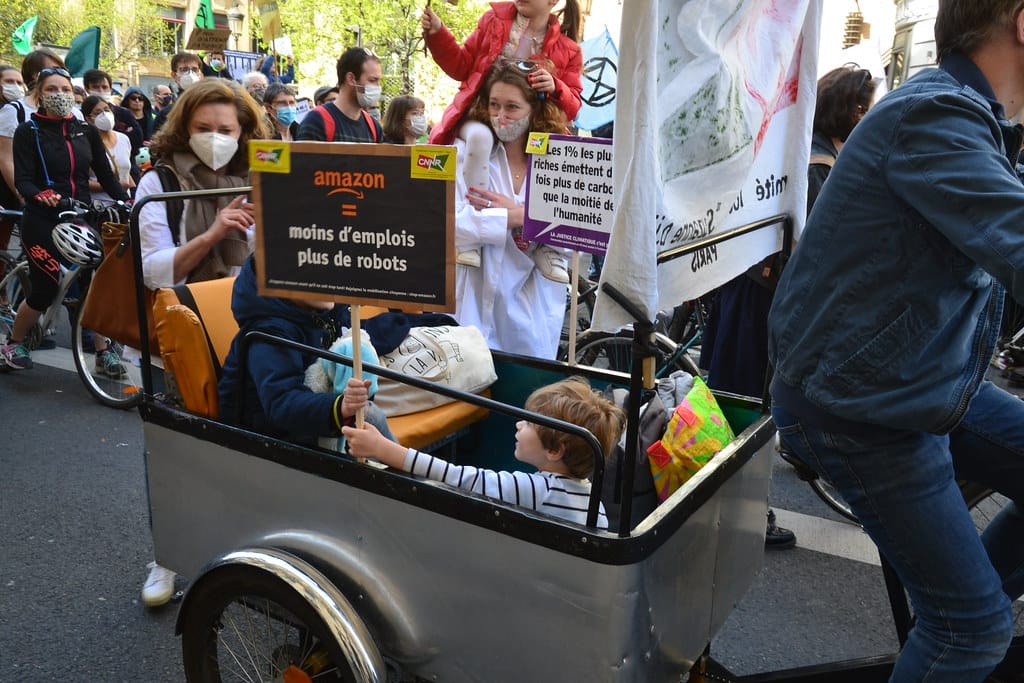Amazon Crosses the Million-Robot Milestone While Unleashing Generative AI Innovation
Amazon has reached a groundbreaking automation milestone, deploying its one millionth robot across its global fulfillment network while simultaneously advancing its artificial intelligence capabilities with a new generative AI model. This dual achievement signals a major shift in how the e-commerce giant operates its logistics empire and positions itself in the rapidly evolving AI landscape.
A Million Robots Strong: The Automation Revolution
The deployment of Amazon's millionth robot represents more than just a numerical achievement—it's a testament to the company's decade-long investment in warehouse automation. These robots, ranging from traditional Kiva shelf-moving units to advanced robotic arms and autonomous mobile robots (AMRs), now work alongside human employees in hundreds of fulfillment centers worldwide.
Amazon's robotic workforce includes several specialized types:
- Drive units that transport entire shelving units to human workers
- Robotic arms capable of handling millions of different products
- Sortation robots that organize packages for delivery
- Autonomous mobile robots that navigate warehouse floors independently
This massive deployment has resulted in significant operational improvements. Amazon reports that facilities with robotic assistance can process orders up to 25% faster than traditional warehouses, while simultaneously reducing workplace injuries by creating more ergonomic working conditions for human employees.
The Generative AI Breakthrough
Parallel to its robotics milestone, Amazon has unveiled a new generative AI model designed to enhance customer experiences and streamline operations. This AI system leverages machine learning to generate product descriptions, optimize search results, and provide more personalized shopping recommendations.
The generative AI model integrates with Amazon's existing infrastructure to:
- Automatically create detailed product listings from basic specifications
- Generate personalized email campaigns based on customer behavior
- Optimize inventory predictions using natural language processing
- Enhance Alexa's conversational capabilities
Early testing shows the AI model can generate product descriptions 75% faster than traditional methods while maintaining accuracy levels that meet Amazon's quality standards.
Workforce Evolution, Not Replacement
Despite concerns about job displacement, Amazon maintains that its robot army is designed to augment human capabilities rather than replace workers entirely. The company has created over 700 new job categories since introducing robotics, focusing on roles that require human judgment, creativity, and complex problem-solving.
Amazon's approach emphasizes collaboration between humans and machines. While robots handle repetitive, physically demanding tasks like lifting heavy items and walking long distances, human workers focus on quality control, exception handling, and tasks requiring fine motor skills and decision-making.
The company has invested over $1 billion in employee training programs, helping workers transition to higher-skilled positions that work alongside robotic systems. These "upskilling" initiatives have trained more than 100,000 employees in technical skills including robotics maintenance, data analysis, and AI system management.
Market Impact and Competitive Response
Amazon's automation advances are reshaping industry standards and forcing competitors to accelerate their own technological investments. Major retailers like Walmart, Target, and Best Buy have all announced significant robotics initiatives in response to Amazon's efficiency gains.
The integration of generative AI particularly positions Amazon ahead of competitors in the race to provide seamless, personalized customer experiences. By combining physical automation with intelligent software, Amazon creates a comprehensive ecosystem that's difficult for competitors to replicate quickly.
Industry analysts project that Amazon's automation investments will yield a 15-20% reduction in operational costs over the next five years, providing significant competitive advantages in pricing and delivery speed.
Looking Ahead: The Future of Automated Commerce
Amazon's million-robot milestone and AI innovations represent just the beginning of a broader transformation in e-commerce operations. The company has announced plans to double its robotic workforce within the next three years while continuing to expand AI capabilities across all business segments.
Future developments include fully autonomous fulfillment centers, predictive shipping that uses AI to send products before customers order them, and advanced robotics capable of handling delicate items like fresh produce and fragile electronics.
The Takeaway
Amazon's achievement of deploying one million robots while advancing generative AI capabilities demonstrates how technology leaders are reshaping entire industries through sustained innovation investment. This milestone signals a new era where physical automation and artificial intelligence converge to create unprecedented operational efficiency.
For consumers, this means faster deliveries, better product recommendations, and more competitive pricing. For the broader market, Amazon's success sets new benchmarks that will drive innovation across the retail sector. As automation and AI continue evolving, the companies that can successfully integrate these technologies while maintaining human-centered approaches will define the future of commerce.
